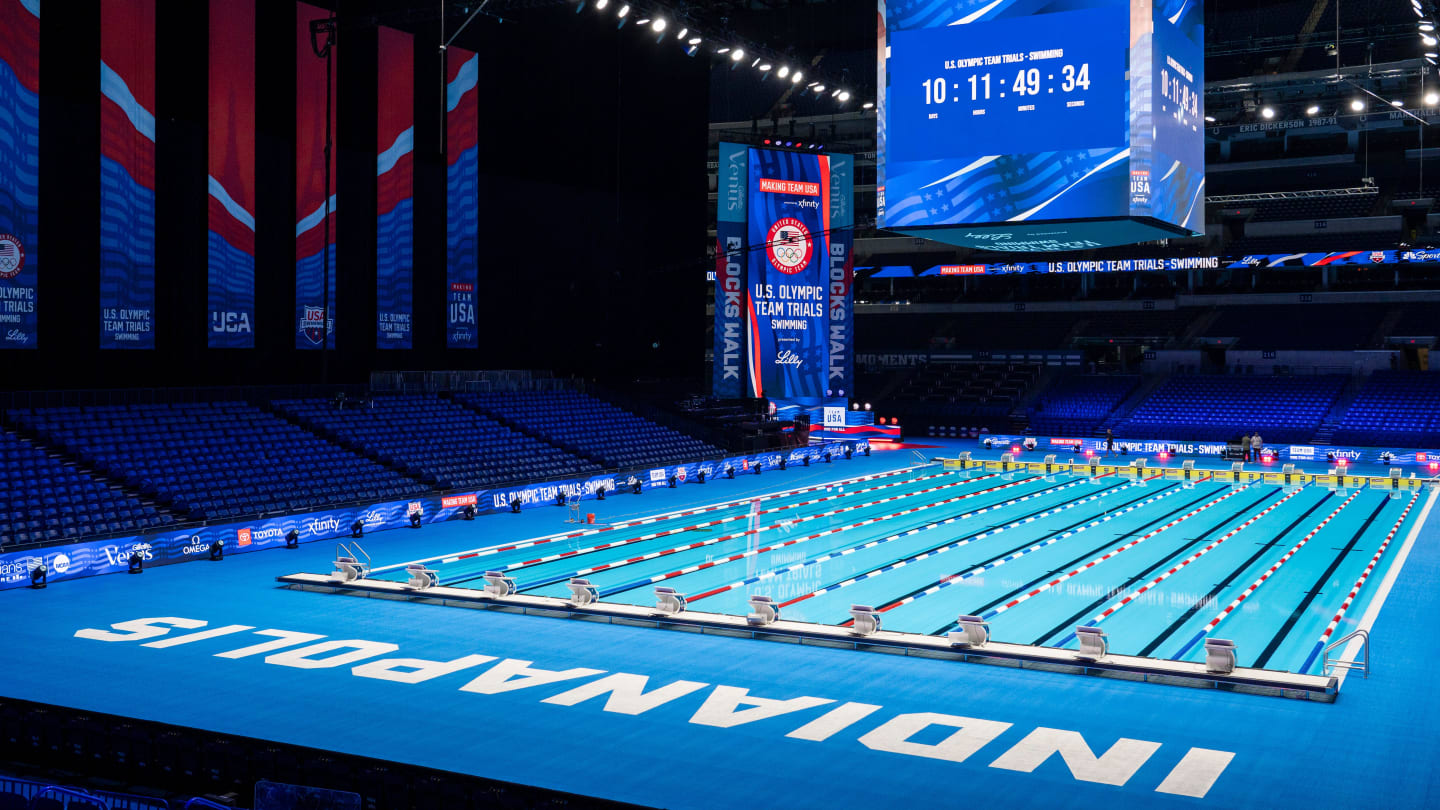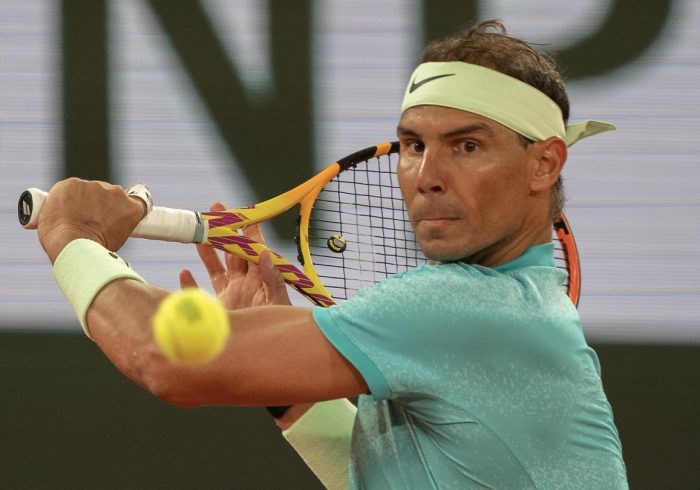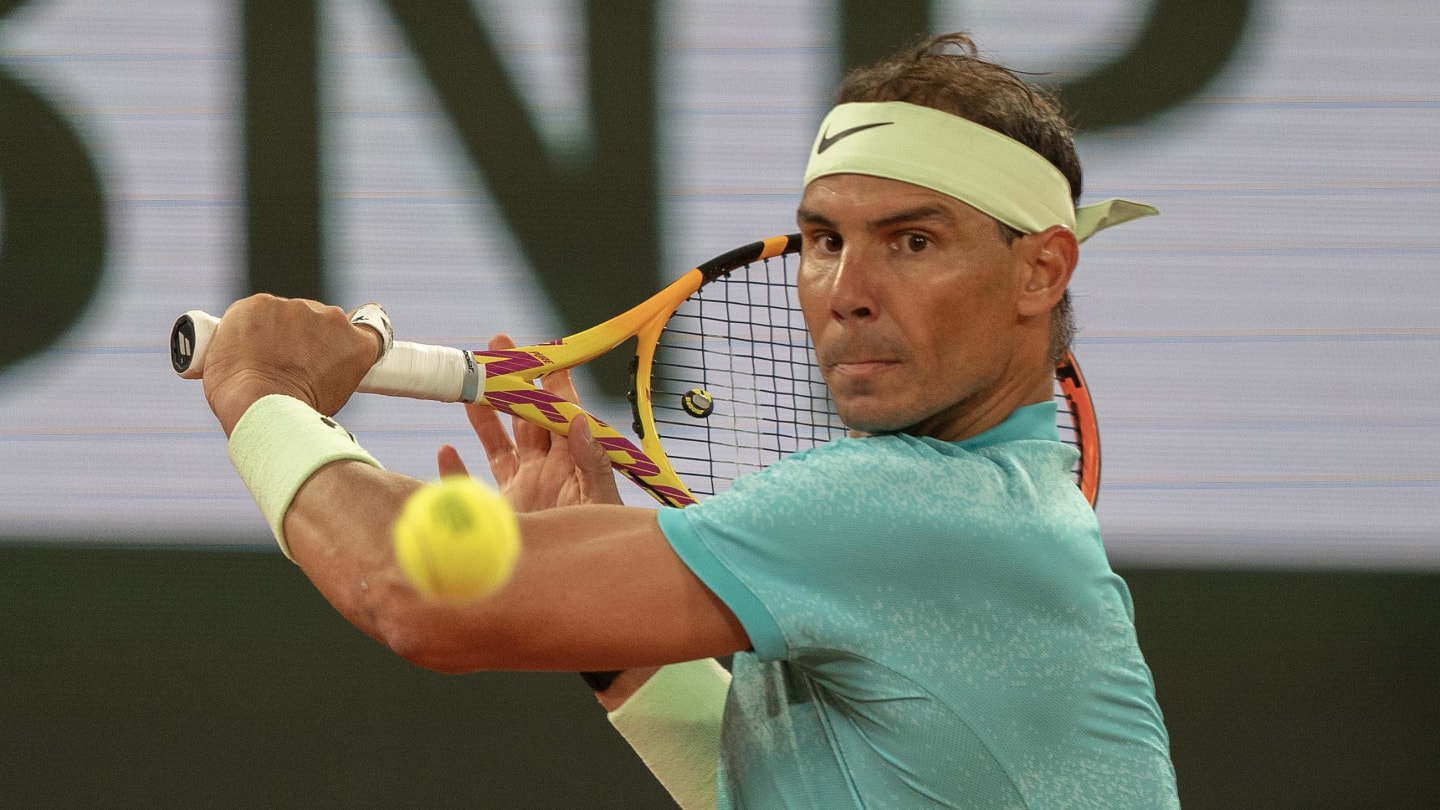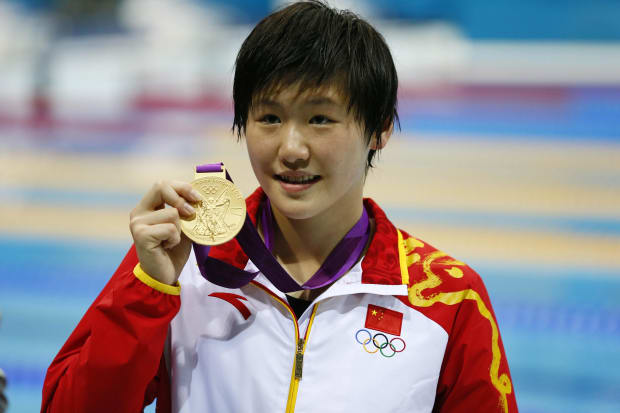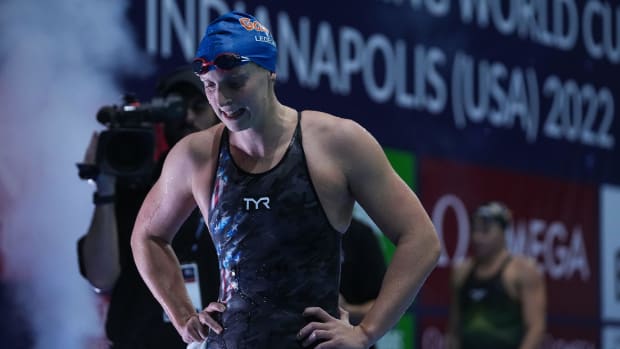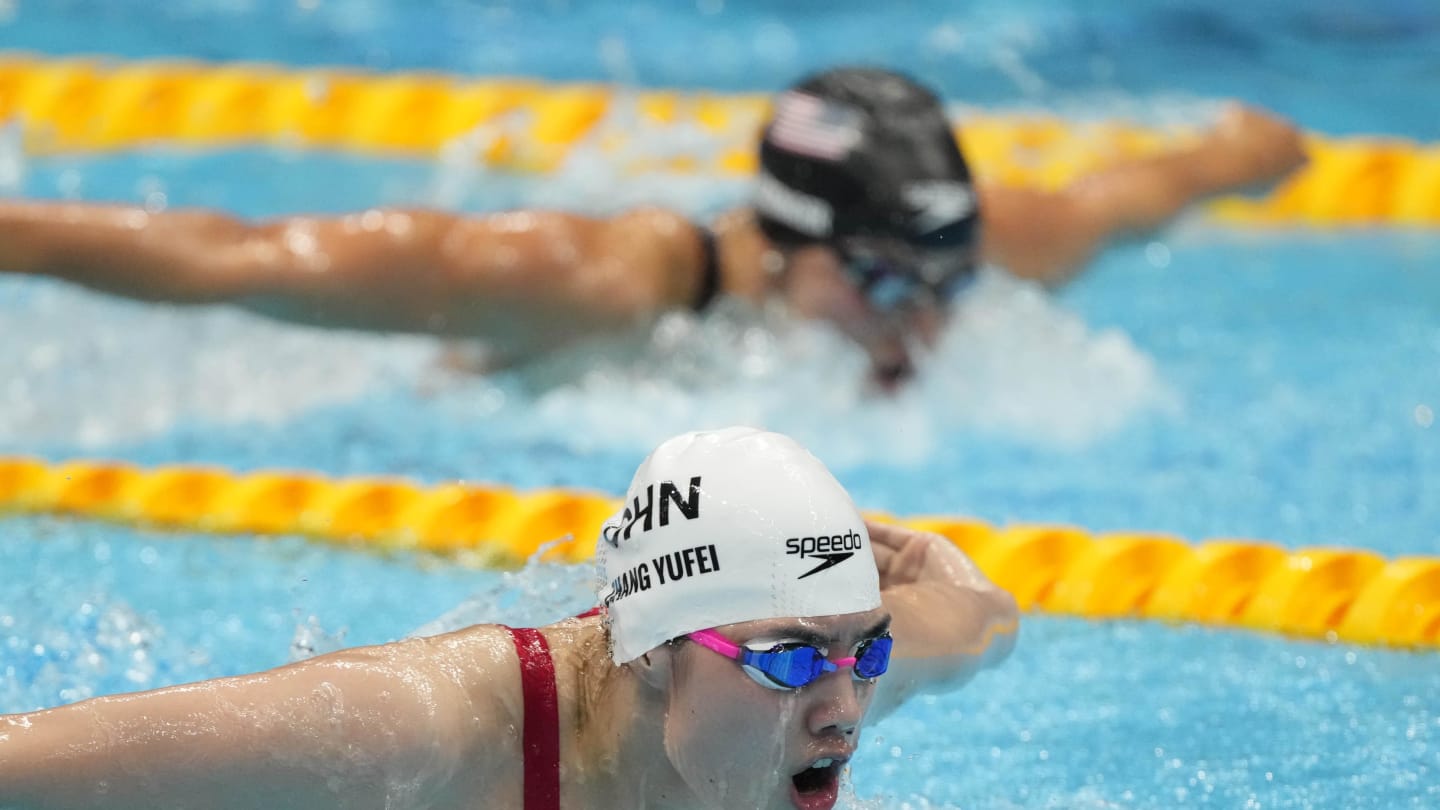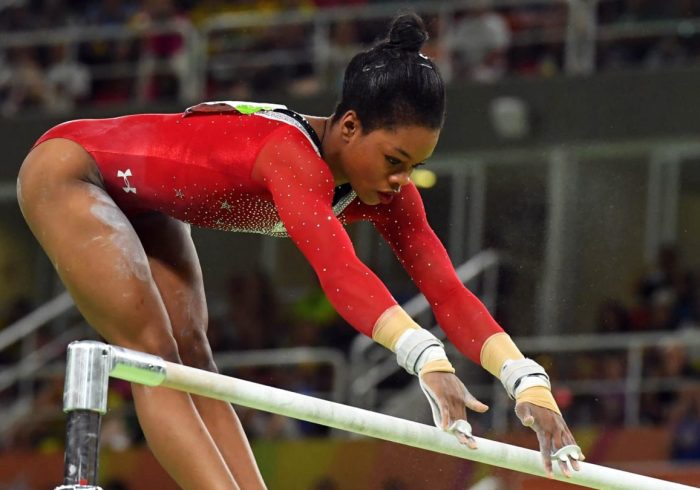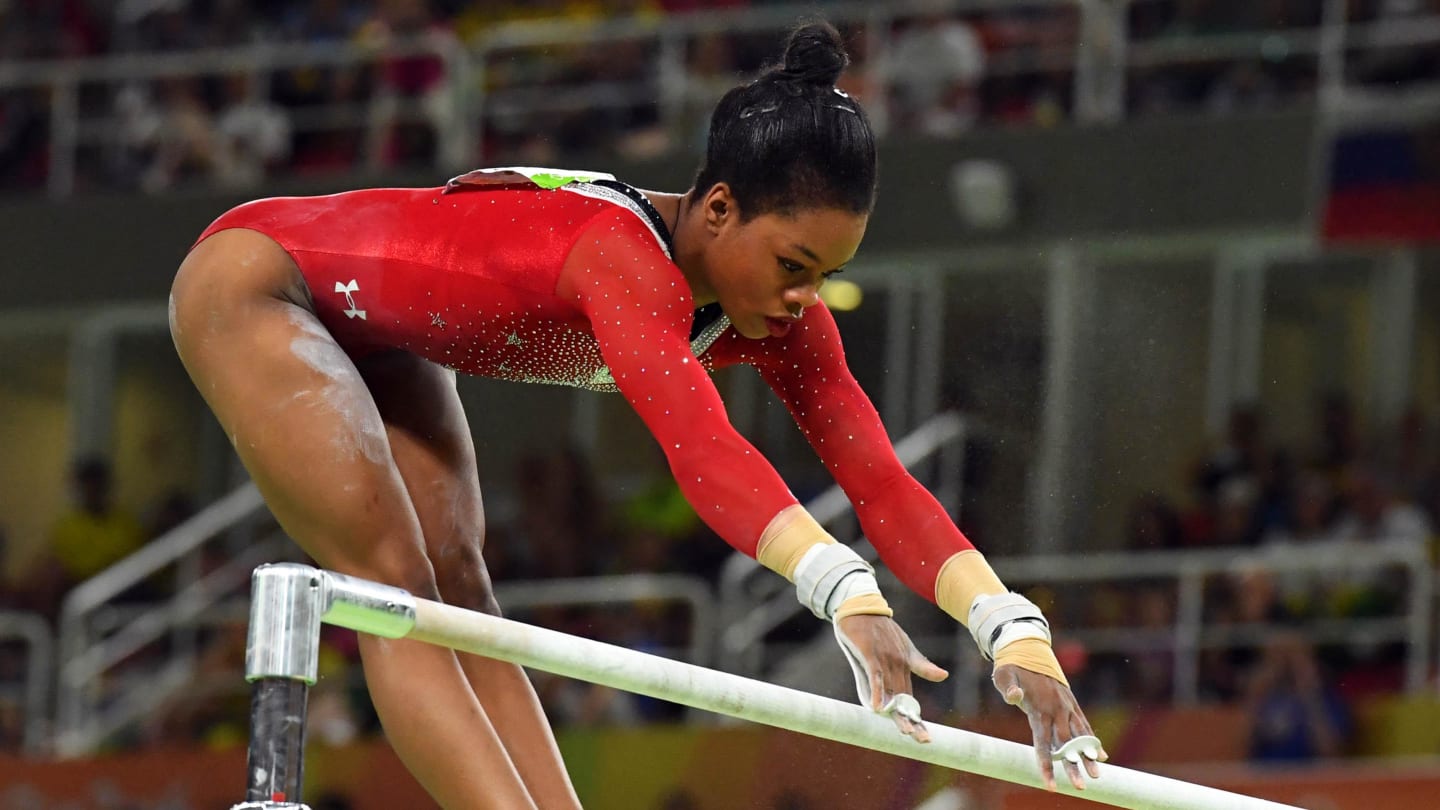How an NFL Stadium Transformed into a Swimming Pool for U.S. Olympic Trials
INDIANAPOLIS—It’s so huge you can’t smell the chlorine.
The dominant sensory experience upon entering any pool area is the olfactory assault of chlorine, the chemical that keeps the water clean. More than the sight of the blue water or the sound of splashing, the smell of a pool is pungent and universal. But that’s not the case in Lucas Oil Stadium, which has been repurposed for the next 10 days as the world’s largest indoor swimming venue.
The space is sufficiently vast that unless you’re on the pool deck or in the water, the whiff of chlorine is not part of the package for these U.S. Olympic Trials.
USA Swimming has seen its signature event outgrow the conventional pools that once hosted Trials, like the Jamail Texas Swim Center in Austin or the IUPUI Natatorium, just a few blocks from Lucas Oil. It has outgrown a basketball venue, after a run of four Trials from 2008 to ’21 in Omaha. Now, it’s time to try an NFL stadium on for size.
“We’re taking a swing,” acknowledged USA Swimming CEO Tim Hinchey, as he gave Sports Illustrated a tour of the venue last week. “We’re seizing the opportunity to amplify our sport.”
America has a long history of thinking big in terms of staging non-football competitions in football stadiums. From the UCLA–Houston men’s basketball game in the Astrodome in 1968 to the NHL’s annual Winter Classic to Nebraska playing a women’s volleyball game in front of 92,000 fans last year, we as a nation love creating massive sports spectacles. But this is a new one.
It took some grand gumption to put swimming—one of the centerpiece Olympic competitions every four years, but otherwise a fringe sport—in a place like this.
The idea took root over steak and red wine at Harry & Izzy’s in downtown Indy in 2018. Local business mogul Scott Davison and Hinchey, a pair of old swimmers, were getting aspirational about how to take their favorite sport to another level.
“Are you serious about hosting Olympic Trials in a football stadium?” Hinchey asked Davison.
“I’m dead serious about it,” Davison replied.
Driving home after dinner, Davison called then-president of Indiana Sports Corporation, Ryan Vaughn. Davison, CEO of OneAmerica Financial, was worried he might have over-promised on behalf of civic leaders.
“Hey, Ryan,” Davison said. “Are we serious about hosting Olympic Trials in a football stadium? Because I just said we are.”
“Damn right we are,” Vaughn said.
So the path toward this event was set. Recent published reports attributed the notion to some blue-sky thinking by USA Swimming chief commercial officer Shana Ferguson during the 2021 Trials in Omaha, but in reality this plan preceded that moment by several years.
(In April 2021, during the pandemic-altered Final Four in Lucas Oil, local sources pointed out the setup of two courts separated by a giant curtain and said the same design was in play for swim Trials. In June of that year, SI was the first to report about plans to move the event out of Omaha and into Indy’s NFL stadium.)
Davison swam collegiately and even coached for a while. He’s still immersed in the sport. He has a two-lane lap pool in his backyard and routinely has Masters swimmers traipsing in and out in the mornings. (“I would have built a one-lane pool, but I like people,” he says.) Hinchey is among those who have gotten in some laps in the backyard.
With those two leading the way and Indy Sports Corp. onboard, plans proceeded and crystalized. USA Swimming took bids from four cities to host this year’s Trials— Omaha, St. Louis and Minneapolis were the other three—and Indy won out.
The city’s centralized geography and hosting history were major factors. Indy has hosted or co-hosted Olympic Trials six other times, and this marks the 100th anniversary of the first one. (Then, like now, the Trials selected a team that would go on to compete in Paris.) The 1987 Pan American Games were in the city, as was the 2002 FIBA World Championship. It also has become an anchor Final Four location, in addition to hosting the 2022 College Football Playoff championship game and the 2012 Super Bowl.
“The Olympic Trials will bolster our reputation as a world-class sports city,” said current Indiana Sports Corporation CEO Patrick Talty.
The Colts, clearly, had to be onboard with the concept. So did the operators of the stadium. The latter was an easy sell.
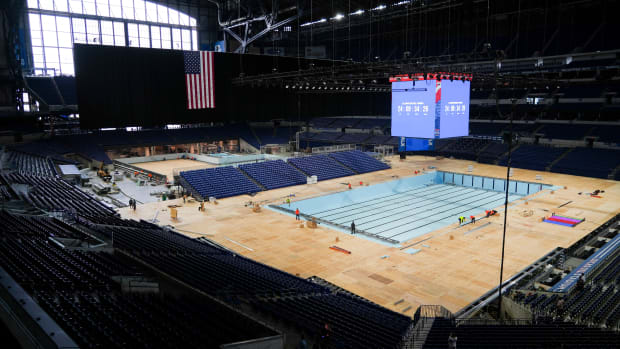
Stadium director Eric Neuburger is the son of Dale Neuburger, who was the vice president of World Aquatics for 21 years and previously worked with USA Track & Field and the IUPUI Natatorium. Eric was one of the “basket kids” at the 1992 Trials, tasked with carrying swimmers’ sweats, shoes and other belongings off the pool deck after races.
His reaction to the idea of building a pool in his stadium: “Bring it on. I live for this stuff. Swimming has been an important part of my life, so I was all for trying to make this happen. … The emerald-green turf is now diamond-blue water.”
Ferguson relocated from USA Swimming headquarters in Colorado Springs to Indy more than a month ago to oversee construction and sweat the details. While Hinchey has worked the marketing and promotion angles, Ferguson has been the logistical driver.
A few weeks ago, she watched as a fire hydrant on Capitol Avenue was cranked open, sending a million gallons of water gushing into Lucas Oil via pipes to fill the competition pool. Then another million went into the warmup and warmdown pool. Everything else has come together around that most vital element.
“We’re almost there,” Ferguson said last week.
Barring logistical mishaps or complete fan apathy, USA Swimming’s vault into football venues may well re-set the bar for the sport’s Olympic Trials in the future. This could be more than just a one-off big swing; it could be the norm.
“It’s going to be hard to go back,” Davison says.
They’ve built it, using the same technology that created a temporary pool in the CHI Health Center in Omaha, where the Creighton Bluejays play home basketball games. Now will the fans come?
That remains to be seen. With a capacity of 70,000 for football, the Lucas Oil swimming venue was ambitiously constructed with up to 30,000 seats. Reach exceeded grasp. In truth, USA Swimming would be happy to average half that over nine days and nights of competition.
The stated goal is to break a world indoor attendance record on opening night Saturday, with the 2016 Rio Olympics credited with maximum crowds of about 16,000, according to Hinchey. (The venue for that meet had a listed capacity of 14,997.)
Even a record crowd could look and sound a bit sparse in this setup. The hope for USA Swimming is that the noise and energy of this dramatic and pressurized meet doesn’t dissipate into unoccupied space.
Regardless how many fans show up, this is the biggest stage for a swim meet in history. Even the most seasoned veterans like Katie Ledecky and Caeleb Dressel are destined to have a “wow” moment upon first sight. The pool measures the same as always—50 meters in length with 10 lanes, eight of which will be used for competition—but the scale of everything surrounding it is spectacularly grand.
Out front of the building, a statue of Peyton Manning is dwarfed by a massive mural on the side featuring multi-stroke star Kate Douglass, who has a chance to be one of the stars of this summer for the U.S.
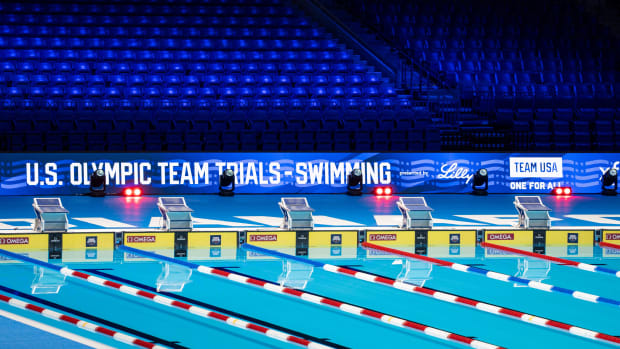
Inside, swimmers will stand on the starting blocks with the names of Indianapolis Colts’ Ring of Honor heroes at their backs. When they finish, they will be churning toward Marvin Harrison and Edgerrin James, Eric Dickerson and Tony Dungy.
Swimmers will walk onto the competition pool deck via an entryway with a 70-foot video board overhead. The board will showcase each athlete as they’re introduced for finals.
Another giant, four-sided video board/scoreboard has been placed above the pool, which will come in handy for a couple of interested parties: fans who are seated farther away from the pool than they were in Omaha; and the competitors themselves, who will have a point of reference while swimming backstroke (better than the disorienting feeling of staring up into the darkness of the ceiling). Times also will be displayed on the bottom of the board, which should aid swimmers who have had to crane their necks to find crucial information at the end of their races.
Other competitor-friendly implementations that are new here:
From the pool deck to the upper deck, the fan experience will be different as well. Fans will have the opportunity to be wined and dined to the extent that their wallets can afford. Suites have been sold out, and there are hospitality areas available for VIPs.
But the swellest of the swell perks is a “speakeasy” dubbed the Dive Bar—a couple of converted field-level suites with windows that will provide underwater views of the competition pool during warmups before night-time finals.
Whether USA Swimming ends up underwater financially from this big swing remains to be seen. But you can’t change the scale of a sport by thinking small.
“We want to showcase how great our sport is,” Hinchey says from the pool deck in an NFL stadium, his ambitious vision towering around him.
